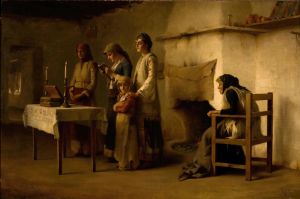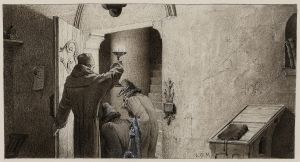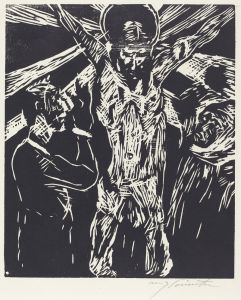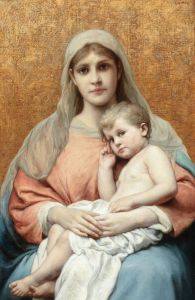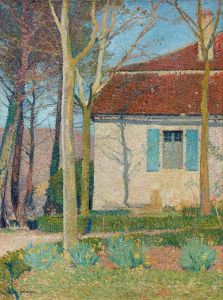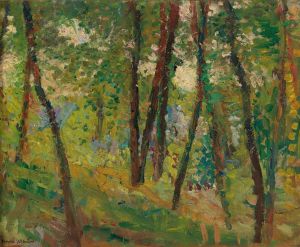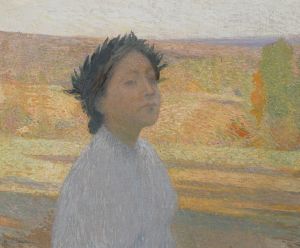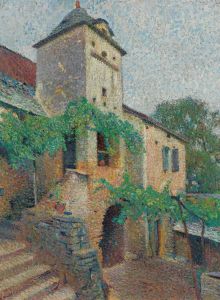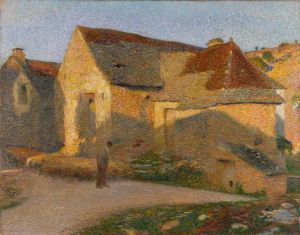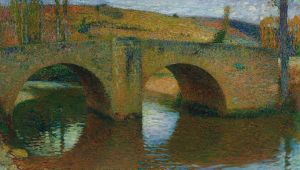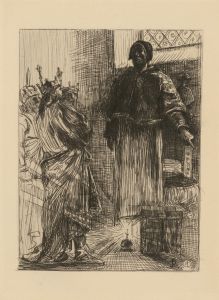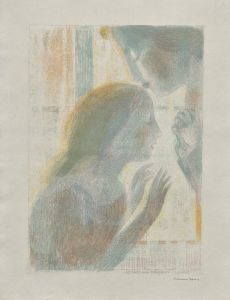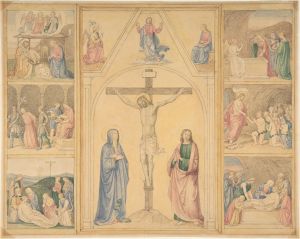
Le crucifix
A hand-painted replica of Henri Martin’s masterpiece Le crucifix, meticulously crafted by professional artists to capture the true essence of the original. Each piece is created with museum-quality canvas and rare mineral pigments, carefully painted by experienced artists with delicate brushstrokes and rich, layered colors to perfectly recreate the texture of the original artwork. Unlike machine-printed reproductions, this hand-painted version brings the painting to life, infused with the artist’s emotions and skill in every stroke. Whether for personal collection or home decoration, it instantly elevates the artistic atmosphere of any space.
Henri Martin was a French painter born on August 5, 1860, in Toulouse, France, and he became known for his contributions to the Post-Impressionist movement. Martin's work is characterized by his use of vibrant colors and a technique that often involved pointillism, a method of painting in which small, distinct dots of color are applied in patterns to form an image. He was particularly known for his landscapes and depictions of rural life, capturing the serene beauty of the French countryside.
"Le Crucifix" by Henri Martin is one of his notable works, although specific details about this painting are not extensively documented in art historical records. Martin's religious-themed paintings often reflect his interest in symbolism and spirituality, which were common themes in his broader body of work. His paintings frequently exhibit a dreamlike quality, achieved through his unique use of light and color, which can also be seen in his religious compositions.
Henri Martin studied at the École des Beaux-Arts in Toulouse and later in Paris, where he was influenced by the Symbolist movement. His style evolved over time, incorporating elements of Impressionism and Symbolism, which can be seen in his treatment of light and color. Martin's work was well-received during his lifetime, and he was awarded several honors, including the prestigious Grand Prix at the Exposition Universelle in 1900.
Throughout his career, Martin was associated with several artistic circles and exhibited his work in various salons and galleries. He was a member of the Société des Artistes Français and later joined the Société Nationale des Beaux-Arts. His work was also exhibited internationally, contributing to his reputation as a significant figure in the Post-Impressionist movement.
Martin's paintings often reflect his deep connection to nature and his surroundings. He spent much of his life in the Lot region of France, where he purchased the Marquayrol estate in Labastide-du-Vert. This location provided him with endless inspiration for his landscapes and rural scenes, which are among his most celebrated works.
While specific information about "Le Crucifix" is limited, it is likely that the painting embodies Martin's characteristic style, with an emphasis on color, light, and a sense of tranquility. His religious works often convey a sense of introspection and spirituality, inviting viewers to contemplate the deeper meanings behind the imagery.
Henri Martin passed away on November 12, 1943, in Labastide-du-Vert, leaving behind a legacy of art that continues to be appreciated for its beauty and emotional depth. His works are held in various public and private collections, and he remains an important figure in the history of French art. Despite the limited information on "Le Crucifix," Martin's overall contribution to art is well-documented and celebrated.





